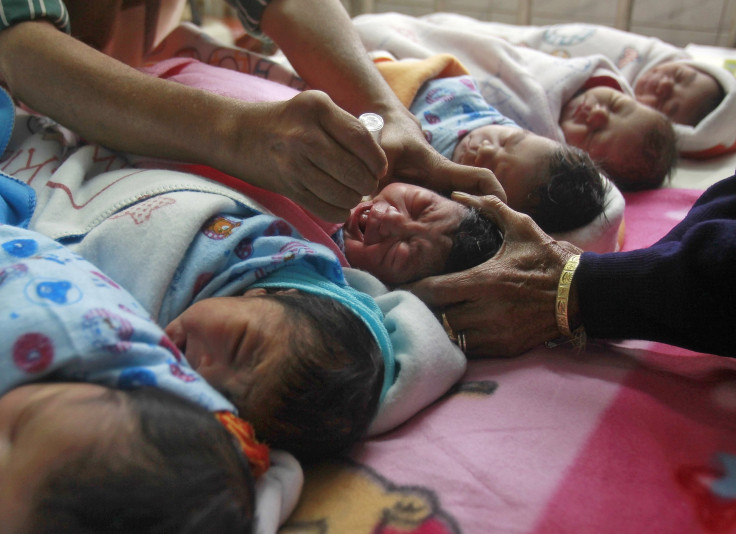India Immunization Campaign Begins On World Health Day, 'Indradhanush' Drive Takes On 7 Infectious Diseases

India’s health ministry is tackling disease prevention with a massive immunization campaign aimed at inoculating 90 percent of the country’s children by 2020 against seven preventable diseases, according to the Times of India. The campaign, which was launched on World Health Day, targets children who haven’t received any vaccinations or are only partially vaccinated against things like diphtheria, tetanus, measles and hepatitis B, diseases for which existing vaccines are effective but not widely administered.
The inoculation effort, called “Indradhanush,” will run from April through July and comes in the wake of a worldwide debate about the efficacy and safety of vaccines following several recent outbreaks of measles in North America and Europe. "I am greatly encouraged by the response from [Members of Parliament,]” said the country’s health minister, Jagat Prakash Nadda Nadda, according to the Economic Times. He lauded the “massive framework put in place to monitor effective implementation of Mission Indradhanush.” Health workers are expected to target the districts with the largest number of undervaccinated children first.
Health officials said the campaign would focus on seven diseases for which vaccines are available, including diphtheria, whooping cough, tetanus, measles and hepatitis B. The program will also tackle Japanese Encephalitis, a deadly virus commonly found in Asia and the western Pacific transmitted by infected mosquitoes that causes fever, tremors and convulsions.
The Indian government provides free immunizations through its national public health system; however, overall vaccination rates in the country remain low. Only 44 percent of children aged 1 to 2 years have received basic inoculations, but that rate drops significantly in rural districts, according to the National Family Health survey. To maintain herd immunity – the number of people who should be vaccinated against a particular disease in order to prevent large-scale outbreaks – health experts say between 90 and 95 percent of a population should be immunized.
Health experts have long praised vaccines as a relatively low-cost health measure with significant benefits for a country’s overall population. Vaccines save millions of lives every year, according to the World Bank. The eradication of smallpox worldwide was largely the result of robust vaccination efforts, and significant drops in other infectious diseases like measles and pertussis, commonly known as whooping cough, have been attributed to vaccines.
Despite India’s low vaccination rates, the country’s immunization efforts over the years have greatly reduced the prevalence of some infectious diseases. In 2013, Indian health officials reported just over 3,100 cases of diphtheria, a serious bacterial throat and nose infection, down from more than 39,000 cases in 1980, according to the World Health Organization. Thirty-five years ago, the country reported more than 114,000 cases of measles. That number has dropped to about 13,800.
© Copyright IBTimes 2024. All rights reserved.






















